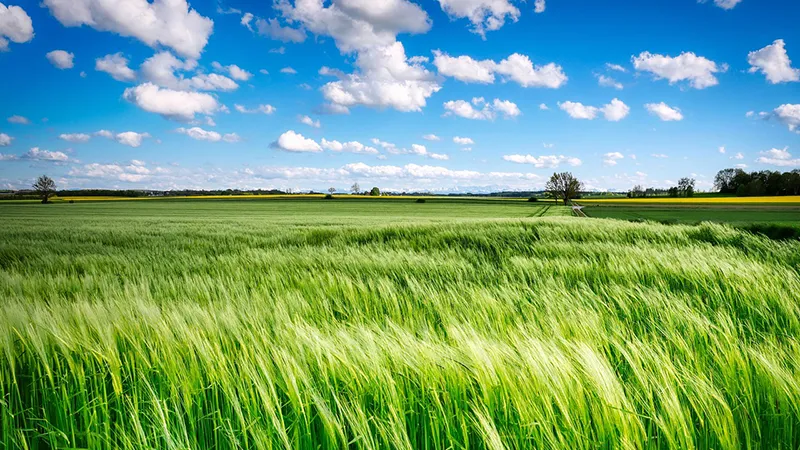Moorefield NebraskaATTRACTIONS & THINGS TO DO
Listed below are the best attractions and things to do near Moorefield, Nebraska.
1. Lazy RW Distillery
CRAFT SPIRITS AND HISTORY
Lazy RW Distillery is a popular attraction in Moorefield that started as a fascination with old journals from a Great Uncle who operated a still during the prohibition era. Visitors can tour the facility and learn about the distillation process while sampling locally-crafted spirits. The distillery maintains strong ties to local history, creating an authentic Nebraska experience for tourists and locals alike.
2. Three Brothers Vineyard & Winery
LOCAL WINE TASTING EXPERIENCE
Three Brothers Vineyard & Winery offers visitors a chance to sample locally-produced wines in a charming rural setting. The winery showcases Nebraska's growing viticulture scene with tastings and tours available for wine enthusiasts. Visitors appreciate the relaxed atmosphere and opportunity to learn about winemaking in the Great Plains region.
3. Sod House Museum
PIONEER LIFE PRESERVED
The Sod House Museum preserves the unique architectural heritage of Nebraska's pioneer settlers. Visitors can step back in time to experience how early homesteaders lived in houses built from prairie sod. The museum features authentic period furnishings and educational exhibits that highlight the ingenuity and perseverance of Nebraska's early inhabitants.
4. First Presbyterian Church
HISTORIC RELIGIOUS ARCHITECTURE
First Presbyterian Church stands as one of Moorefield's historic landmarks with its distinctive architecture and community significance. The church has served as a spiritual and social center for local residents for generations. Visitors can appreciate the craftsmanship and historical importance of this longstanding religious institution.
5. Pony Express Station
HISTORIC MAIL SERVICE
The Pony Express Station commemorates the famous mail delivery service that connected the East and West coasts in the 1860s. This preserved station offers visitors a glimpse into an important chapter of American frontier history. Exhibits showcase original artifacts and tell stories of the brave riders who carried mail across dangerous territory.
6. Starke Round Barn
WORLD'S LARGEST TRUE ROUND
The Starke Round Barn holds the distinction of being the largest 'true' round barn in the world. This architectural marvel showcases innovative agricultural design from the early 20th century. Visitors can marvel at the impressive wooden structure and learn about its historical significance to Nebraska's farming heritage.
7. Willa Cather Childhood Home
LITERARY HISTORICAL LANDMARK
The Willa Cather Childhood Home is a National Historic Landmark preserving the early environment that shaped one of America's most celebrated authors. Visitors can tour the restored home to gain insight into Cather's formative years and inspirations. The site serves as the centerpiece of Red Cloud's extensive Willa Cather heritage tourism offerings.
8. Pike-Pawnee Village
NATIVE AMERICAN HERITAGE
The Pike-Pawnee Village is one of Nebraska's National Historic Landmarks showcasing the rich Native American heritage of the region. This archaeological site marks the location of a significant Pawnee settlement visited by explorer Zebulon Pike. Visitors interested in indigenous history can learn about Pawnee culture and the early interactions between Native Americans and European explorers.
9. Red Cloud Cemetery
HISTORICAL RESTING PLACE
Red Cloud Cemetery offers visitors a connection to the area's past through its historic gravesites and monuments. The cemetery contains the final resting places of notable local figures and pioneers who shaped the region. Walking tours provide insights into the community's development and the individuals who contributed to its growth.
10. Little Red School House
PRESERVED RURAL EDUCATION
The Little Red School House stands as a well-preserved example of a one-room schoolhouse from Nebraska's pioneering era. Visitors can experience what education was like for rural students in the late 19th and early 20th centuries. The schoolhouse contains original furnishings and educational materials that bring this aspect of prairie life into focus.
11. Malick Park and Historic Baseball Fields
AMERICA'S PASTIME PRESERVED
Malick Park and Historic Baseball Fields celebrate the region's deep connection to America's national pastime. The park preserves playing fields with connections to Baseball Hall of Famers Cy Young and Dazzy Vance. Visitors can experience the nostalgia of baseball's earlier eras while enjoying the recreational facilities.
12. Indian Princess Hill
LOCAL LEGEND LANDMARK
Indian Princess Hill is a natural landmark steeped in local folklore and Native American legends. The hill offers panoramic views of the surrounding Nebraska landscape and serves as a reminder of the area's indigenous heritage. Visitors can hike to the summit while contemplating the stories and history associated with this distinctive geographical feature.
13. Carhenge
AUTOMOTIVE STONEHENGE REPLICA
Carhenge is a unique roadside attraction that replicates England's Stonehenge using vintage American automobiles. Created by artist Jim Reinders, this whimsical monument has become one of Nebraska's most photographed landmarks. Visitors are drawn to the imaginative use of cars painted gray and arranged in the same pattern as the ancient stone circle.
14. Chimney Rock National Historic Site
ICONIC WESTERN LANDMARK
Chimney Rock National Historic Site preserves one of the most recognized landmarks of the Oregon Trail. Rising approximately 300 feet above the surrounding North Platte River Valley, this natural formation served as an important navigational aid for westward travelers. The visitor center offers educational exhibits about the site's significance to America's westward expansion.
15. Scotts Bluff National Monument
HISTORIC WESTERN TRAIL
Scotts Bluff National Monument towers over the North Platte River Valley as a dramatic natural landmark visible for miles. The monument preserves more than 3,000 acres of mixed-grass prairie, badlands, and towering bluffs that were crucial landmarks for travelers on the Oregon, California, and Mormon Trails. Visitors can drive or hike to the summit for spectacular views and explore the visitor center to learn about the natural and cultural history of the region.
